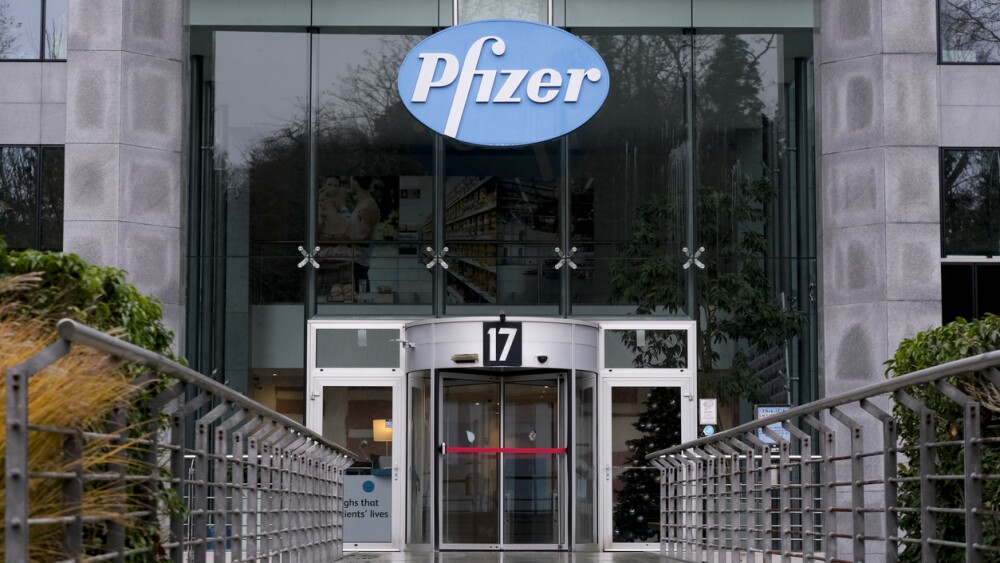A failed rare disease clinical trial brings social media expertise to the pharma industry and patient recruitment: A discussion with Bryan Manning, founder of Clinical Enrollment and Two Blind Brothers
Patient recruitment has always been a challenge for the pharma industry. While traditional methods, such as working with primary care doctors, work, they are slow and often costly. Patient recruitment seems to have been left behind in the industry’s embrace of technology in addressing problems.
According to a 2022 presentation by Elizabeth Ness, director of the Office of Education and Compliance at NIH’s National Cancer Institute, 86% of clinical trials in cancer fail to finish on time, with 60% either delayed or terminated due to patient recruitment issues. Those that do not fail often are delayed by six months or longer (Recruitment to Cancer: Clinical Trials: Challenges and Strategies). These statistics are similar for other therapeutic categories, with one challenge being recruiting more diverse patient populations, specifically underrepresented groups and women. During the FDA’s Rare Disease Day 2023, the discussion focused on how to increase patient awareness of clinical trials and increase diversity for diseases with limited patient populations.
Bryan Manning, founder of boutique biotech agency Clinical Enrollment and co-founder of Two Blind Brothers, experienced firsthand the frustration of not being aware of a clinical trial for his own rare condition,
Stargardt’s disease, a juvenile form of macular degeneration. As a well-known activist for his disease, he was devastated to learn that the clinical trial for it failed due to lack of recruitment. “I drove by the clinical trial site almost daily without any knowledge of it. If I was unaware, and I am well-known in the space, imagine how many other patients are out there, willing to participate but unaware of a trial.”
He discovered this lack of awareness was the norm, largely due to how patients are recruited. Diversity has been a challenge, he said, because of the top way organizers find patients for clinical trials: “They use clinic databases to gain access to their patient rosters or the communities they serve. They call that list.” Members of underrepresented populations may not be on those lists because they traditionally have been less likely to visit doctors, clinics, or offices more than once or twice a year.
This challenge is only going to become more difficult. A recent survey by the Kaiser Family Foundation found that 45 percent of 18- to 29-year-olds and 28 percent of those ages 30 to 49 did not have a primary care doctor. Primary care doctors are the most traditional reliable recruiting source. “It is abhorrent to think that the treatments for the diseases that would help the people the most are not getting in front of them,” Manning stated.
Gaps in Meaningful Connection
Trial awareness isn’t the only recruiting problem for the biopharma industry; a lack of human connection is. Manning suggested that a way to close the gaps among sponsors, trial sites and patients is to center it around connecting to patients where they are most engaged: social media. This is no easy task, however. While there has been some use of social media in recruitment, campaigns are often not engaging or informative enough to reach patients. Based on his experience with Two Blind Brothers, Manning recommends a fluid approach when using social media. Campaigns need to be emotionally-driven with the right balance of being informative enough without overwhelming to patients or caregivers.
Manning also highlights that social media campaigns are not “set it and forget it” campaigns. It requires seeking out prospective patients in their online communities and selecting the correct messages and campaigns based on potential patient behaviors. “Going out and finding these patients—understanding what their needs are, understanding what they know, how they interact with the world, what they want to hear, what they don’t want to hear—is the only way to build true connection,” Manning said. Although needed to optimize successful recruitment and retention, this ability to be able to pivot based on what is resonating with communities often presents a real challenge for sponsors.
Biotechs cannot officially or effectively prospect new clients because they do not have an approved drug. Additionally, recruiting is costly and since biotechs are in a pre-revenue state, they do not have the budget to raise awareness. “The space is crowded with about four times the number of clinical trials than there were in 2017, with the same number of patients. So even if everything works perfectly using the classic way of talking to patients through clinics, they must reach the right patients within a crowded space that is inundating them with clinical trials information,” Manning further clarified.
The Virtual Beauty in Social Media
In today’s virtual world, stagnant images appear on social media platforms that simply do not speak to communities, whether because they lack diversity, cultural resonance or just human connection. Patient recruitment gains are slow, costly and time-consuming, similar to traditional approaches. Manning suggested that there are better approaches to engaging the patient population.
The first introduction to the trial sets the tone for patient interactions throughout the trial. “What the industry is lacking is the passion behind these trials. When creating content, it should express the emotionality of a trial, of going through the trial as a patient, being part of the disease, and give hope for the future,” Manning argued. He has found the most successful medium to be video. Specialists and doctors within the community speak about the trial and its complexities in ways that are understandable to patients. Because of the nature of social media, these video narratives reach not only the patients, but others in their spheres, such as caregivers and friends.
Engagement does not stop there, however. To recruit and retain patients, patients must be engaged in deliberate, compassionate ways to move them further down the funnel for recruitment. Clinical trial enrollment can be confusing to patients, so Manning believes that sponsors need to think of alleviating the confusion. He recommends creating a patient-friendly website that houses all the trial information, which goes beyond just the video narrative. “An important, and often missed, step is to create patient-friendly digestible communications out of those 75-page protocol documents that doctors and researchers understand. Key elements are: what the trial is about, who will make it in the trial and most importantly, what are the potential benefits for me as the patient?”
This approach works. Manning highlighted that he has been using it to assist with clinical trials. Clinical Enrollment used this patient-first approach to help a clinical trial in the cognitive impairment space that was struggling with patient recruitment and retention. “We came into the project about halfway through the trial. We ended up providing about 25% to 30% of their total enrollment.”
Engaging narratives around a trial lay a foundation of trust for patients and their caregivers, but most importantly give hope. “I will not ever let a family live without hope because they didn’t know about or understand a trial,” Manning said.
Struggling with trial recruitment? Get in touch with Clinical Enrollment here, or email them at help@clinicalenrollment.com.
The insights team analyzes and comments on industry trends and creates thought leadership content for BioSpace and clients. The head of insights, Lori Ellis, can be contacted via lori.ellis@biospace.com. Follow her on LinkedIn.






